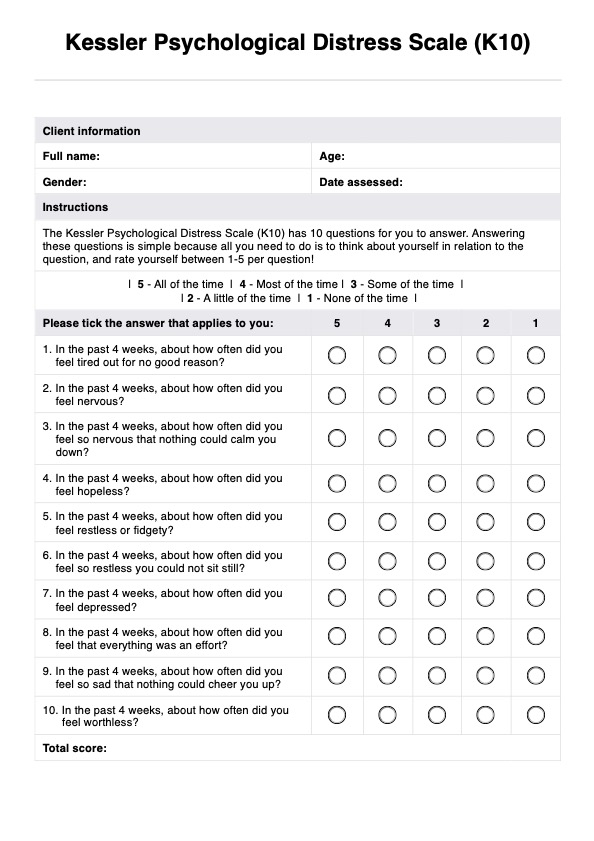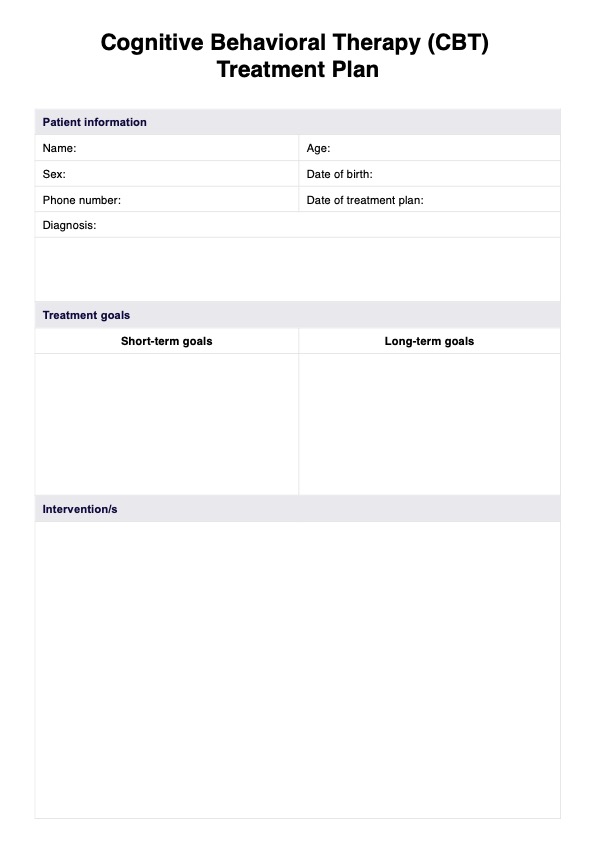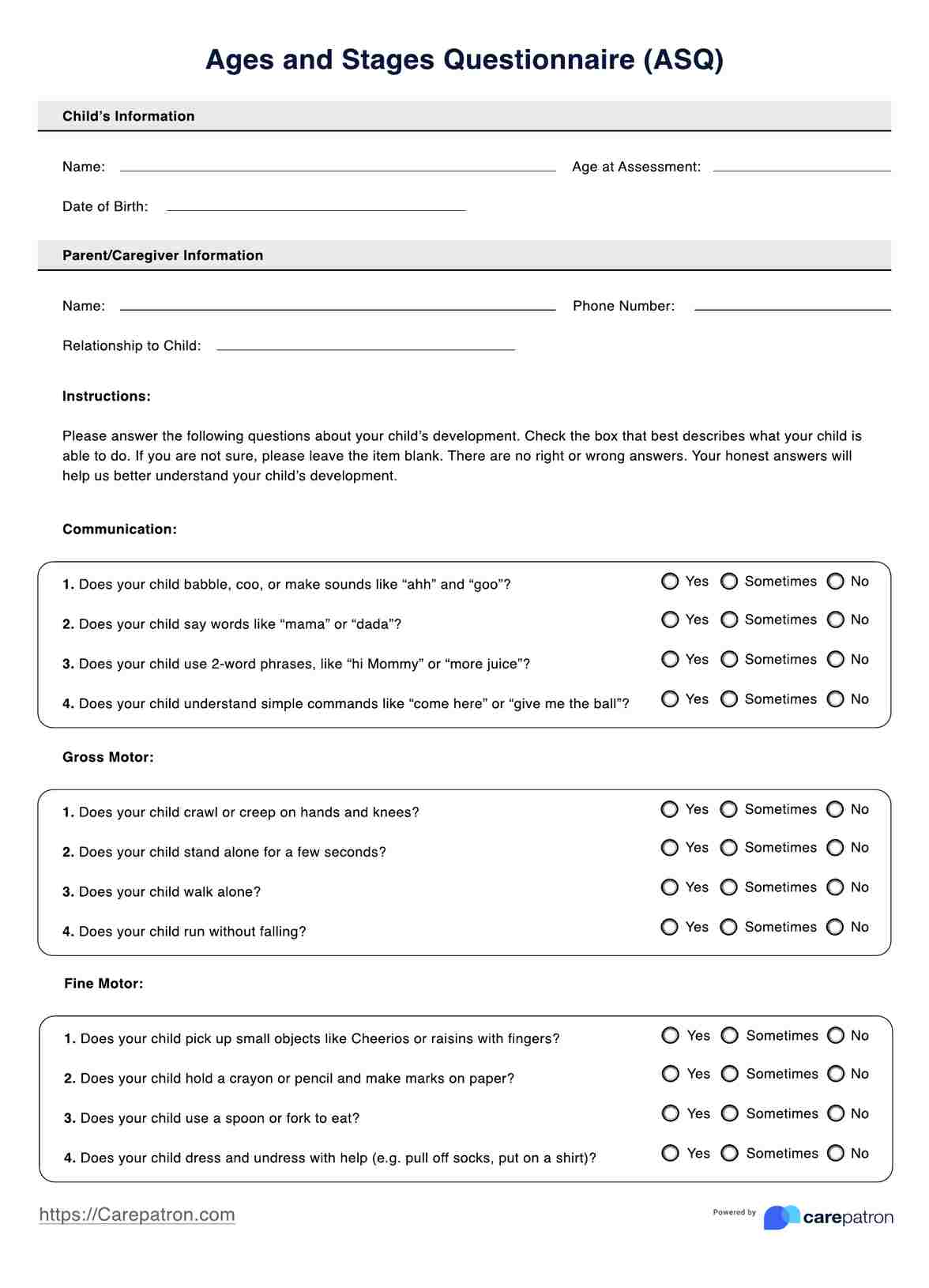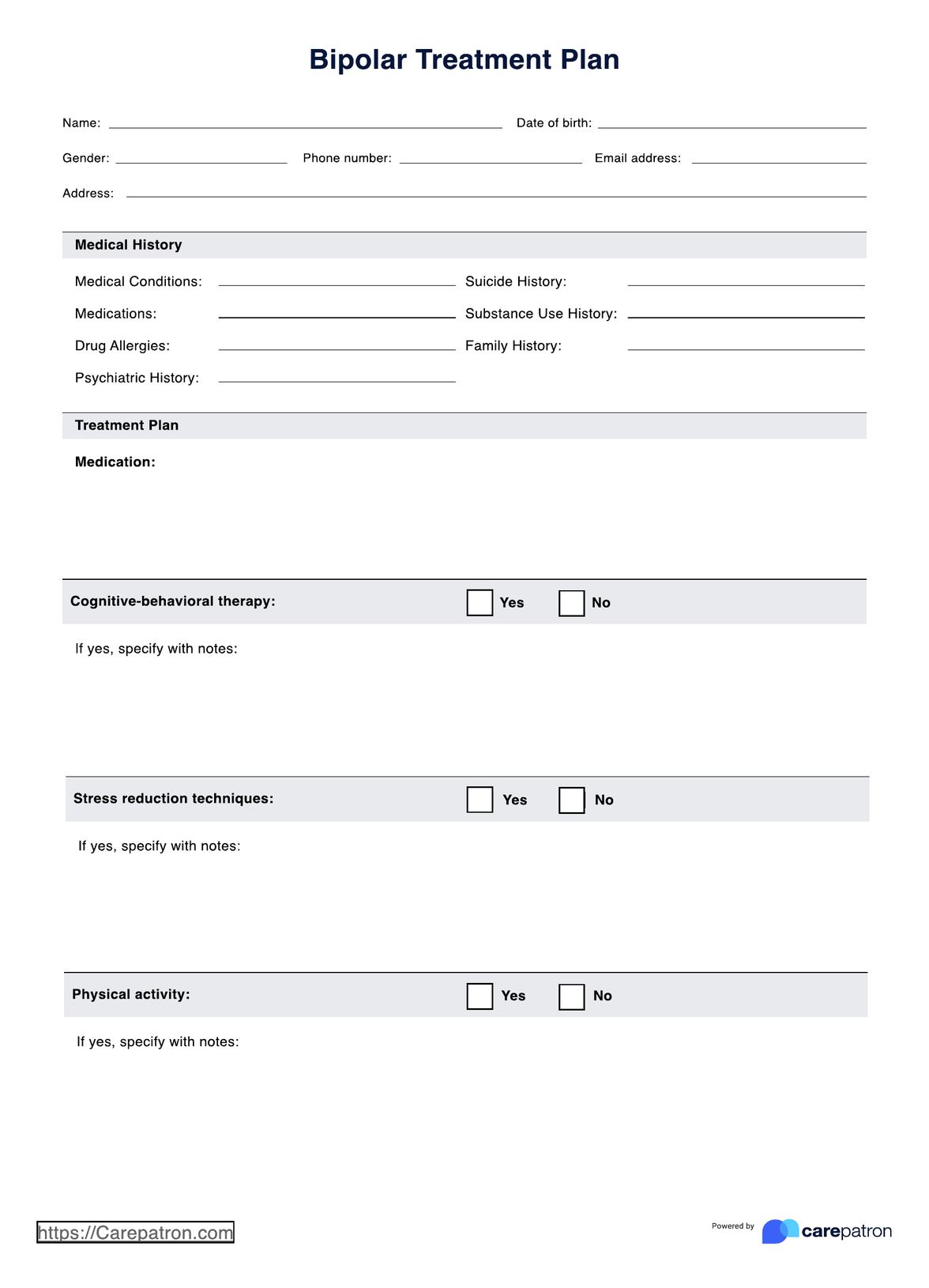Trauma and the Brain: List of Techniques to Cope
Explore Carepatron's free comprehensive list of techniques to cope with trauma and understand the connection between trauma and the brain. Download it here.


Understanding trauma's impact on the brain
Traumatic events have a profound effect on the brain, reshaping its function and structure in significant ways. When we talk about trauma and the brain, it's essential to understand how the brain responds to these experiences.
At the core of this response is the amygdala, a small but powerful region of the brain responsible for processing emotions, particularly fear and threat detection. During a traumatic event, the amygdala becomes hyperactive, heightening our senses and preparing us to respond to danger. This heightened state of arousal can persist long after the traumatic event has ended, leading to persistent feelings of anxiety and hypervigilance.
Another key player in trauma and the brain is the prefrontal cortex, which is responsible for regulating emotions and decision-making. Trauma can impair the functioning of the prefrontal cortex, making it difficult for individuals to regulate their emotions and make rational decisions. This can manifest as emotional dysregulation, impulsivity, and difficulty in managing stress.
Furthermore, trauma can have detrimental effects on the hippocampus, a brain structure crucial for memory processing. The hippocampus helps us encode and retrieve memories, but exposure to trauma can interfere with its functioning, leading to fragmented or distorted memories of the traumatic event. This can contribute to the development of conditions like post-traumatic stress disorder (PTSD), where intrusive memories of the trauma intrude into daily life.
Trauma and the Brain: List of Techniques to Cope Template
Trauma and the Brain: List of Techniques to Cope Example
Recognizing trauma responses
When the brain perceives a threat, it activates survival mechanisms aimed at protecting the individual from harm. These mechanisms, commonly known as the "4Fs" - fight, flight, freeze, and fawn, play a crucial role in how individuals respond to traumatic experiences.
Fight
The "fight" response involves a heightened state of arousal, where the individual may become aggressive or confrontational in an attempt to defend themselves. This response is driven by the brain's instinct to protect against perceived danger.
Flight
Conversely, the "flight" response involves a strong urge to escape or avoid the source of danger altogether. Individuals experiencing this response may feel an intense need to flee from threatening situations to ensure their safety.
Freeze
The "freeze" response occurs when the brain perceives overwhelming danger and immobilizes the individual, often leading to paralysis or dissociation. This response is a protective mechanism that allows the brain to conserve energy and assess the situation before taking action.
Fawn
Additionally, the "fawn" response involves seeking to please or appease the source of the threat to avoid harm. Individuals may engage in submissive behaviors or attempt to appease the perceived threat to minimize the risk of damage.
Recognizing trauma responses in oneself can be challenging, as they may manifest in various ways, including intense emotional reactions, heightened anxiety, and difficulty concentrating. It's essential to pay attention to these signs and seek support when needed.
It's also crucial to differentiate between acute stress reactions and chronic PTSD. Acute stress reactions are common responses to traumatic events and typically resolve within a few weeks. However, when these symptoms persist for an extended period and significantly affect daily functioning, they may indicate the presence of PTSD.
Techniques to cope with a traumatic event and its effects on the brain
Coping with the aftermath of a traumatic event can be challenging, but there are various techniques that individuals can utilize to support their healing journey. These techniques not only help manage the immediate effects of trauma on the brain but also promote long-term resilience and recovery. Here are some effective strategies to consider:
Mindfulness and grounding techniques
Mindfulness practices involve bringing attention to the present moment without judgment, which can help individuals regulate their emotions and reduce stress. Grounding techniques, such as deep breathing exercises and sensory grounding, help anchor individuals in the present and alleviate feelings of dissociation or overwhelm.
Cognitive behavioral techniques
Cognitive-behavioral techniques focus on identifying and challenging negative thought patterns and behaviors associated with trauma. Through cognitive restructuring and exposure therapy, individuals can learn to reframe their perceptions of the traumatic event and develop healthier coping strategies.
Somatic experiencing
Somatic experiencing is a body-centered approach to trauma therapy that focuses on releasing physical tension and stored trauma energy. By reconnecting with bodily sensations and promoting self-regulation, somatic experiencing helps individuals process and integrate traumatic experiences on a physiological level.
Art and expressive therapies
Art and expressive therapies, such as painting, writing, or music, offer creative outlets for processing emotions and expressing experiences that may be difficult to verbalize. These modalities can facilitate healing by tapping into the brain's innate capacity for creativity and self-expression.
EMDR (Eye movement desensitization and reprocessing)
EMDR is a therapeutic approach that uses bilateral stimulation, such as eye movements or taps, to facilitate the processing of traumatic memories. By accessing and reprocessing traumatic memories, EMDR helps individuals desensitize to distressing triggers and create new associations with past experiences.
Neurofeedback
During neurofeedback sessions, individuals are connected to sensors that measure their brainwave activity, particularly in regions associated with the prefrontal cortex. Through visual or EEG biofeedback, individuals receive real-time information about their brainwave patterns. This also enhances prefrontal cortex function.
Building a trauma-informed life
Establishing a trauma-informed approach involves cultivating an environment that promotes healing and resilience. Strategies for building a trauma-informed life include prioritizing self-care, establishing routines, and creating a supportive network of relationships.
Central to building a trauma-informed life is creating a sense of safety and predictability. This may involve implementing grounding techniques, such as mindfulness practices or sensory-based activities, to help regulate emotions and manage stress responses. Establishing routines and structure can provide a sense of stability and control, reducing feelings of uncertainty and anxiety.
Social connections and support networks play a crucial role in recovery from trauma. Cultivating relationships with trusted friends, family members, or support groups can provide validation, understanding, and encouragement along the healing journey.
Seeking professional help after traumatic events
After experiencing a traumatic event, seeking professional help can be a crucial step towards healing and recovery. Knowing when to seek therapy for trauma and the brain is essential for addressing the psychological and emotional impact of trauma effectively.
Some signs to look out for are flashbacks, nightmares, difficulty in regulating emotions and engaging in healthy coping strategies, and negative changes in connecting with other people.
When seeking therapy for trauma, it's essential to work with professionals who specialize in trauma treatments. Here are some types of professionals who may provide trauma-focused therapy:
- Psychologists: Clinical psychologists often specialize in trauma therapy and may use evidence-based approaches such as cognitive-behavioral therapy (CBT) or eye movement desensitization and reprocessing (EMDR).
- Psychiatrists: Psychiatrists are medical doctors who can prescribe medication to manage symptoms of trauma-related disorders such as post-traumatic stress disorder (PTSD). They may also provide therapy or collaborate with therapists to provide comprehensive care.
- Licensed therapists: Licensed therapists, including licensed clinical social workers (LCSWs), licensed professional counselors (LPCs), and licensed marriage and family therapists (LMFTs), may specialize in trauma therapy and offer a variety of therapeutic approaches.
Trauma can have a profound impact on the brain, shaping our thoughts, emotions, and behaviors in complex ways. However, it's important to remember that healing and recovery are possible. By understanding how trauma affects the brain and implementing effective coping strategies, individuals can reclaim their sense of well-being and resilience.
This guide discussed various techniques for coping with trauma, from mindfulness and grounding exercises to trauma-focused therapy and professional support. While the journey towards healing may be challenging, it's also filled with opportunities for growth and transformation.
Commonly asked questions
Trauma can alter brain function and structure, affecting areas responsible for processing emotions, regulating stress, and storing memories.
Releasing trauma from the body involves practices such as mindfulness, yoga, and somatic experiencing, which help process and release stored tension and energy.
When trauma is triggered, the brain's alarm system activates, leading to a surge of stress hormones and physiological responses such as increased heart rate, sweating, and heightened alertness.


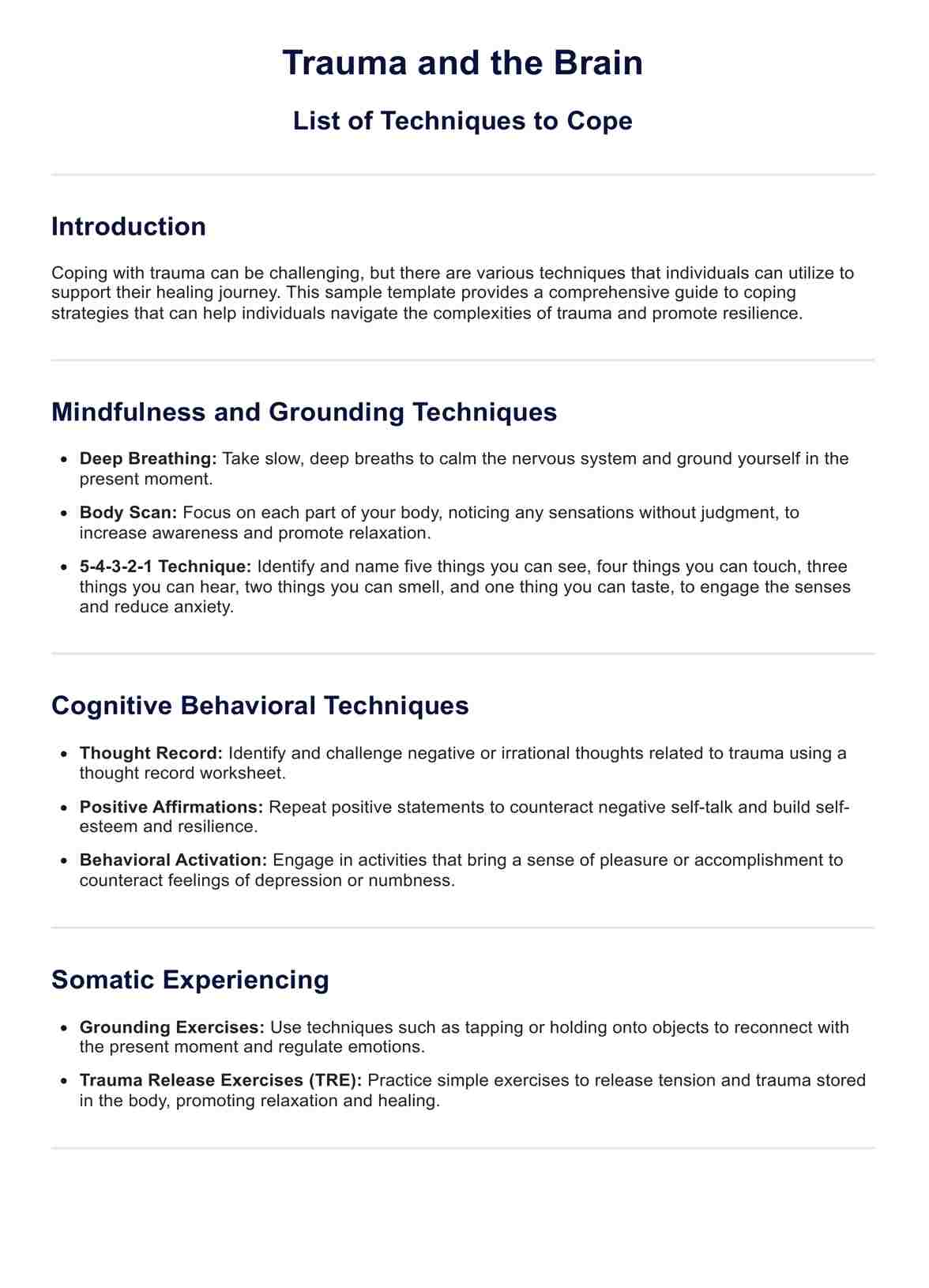
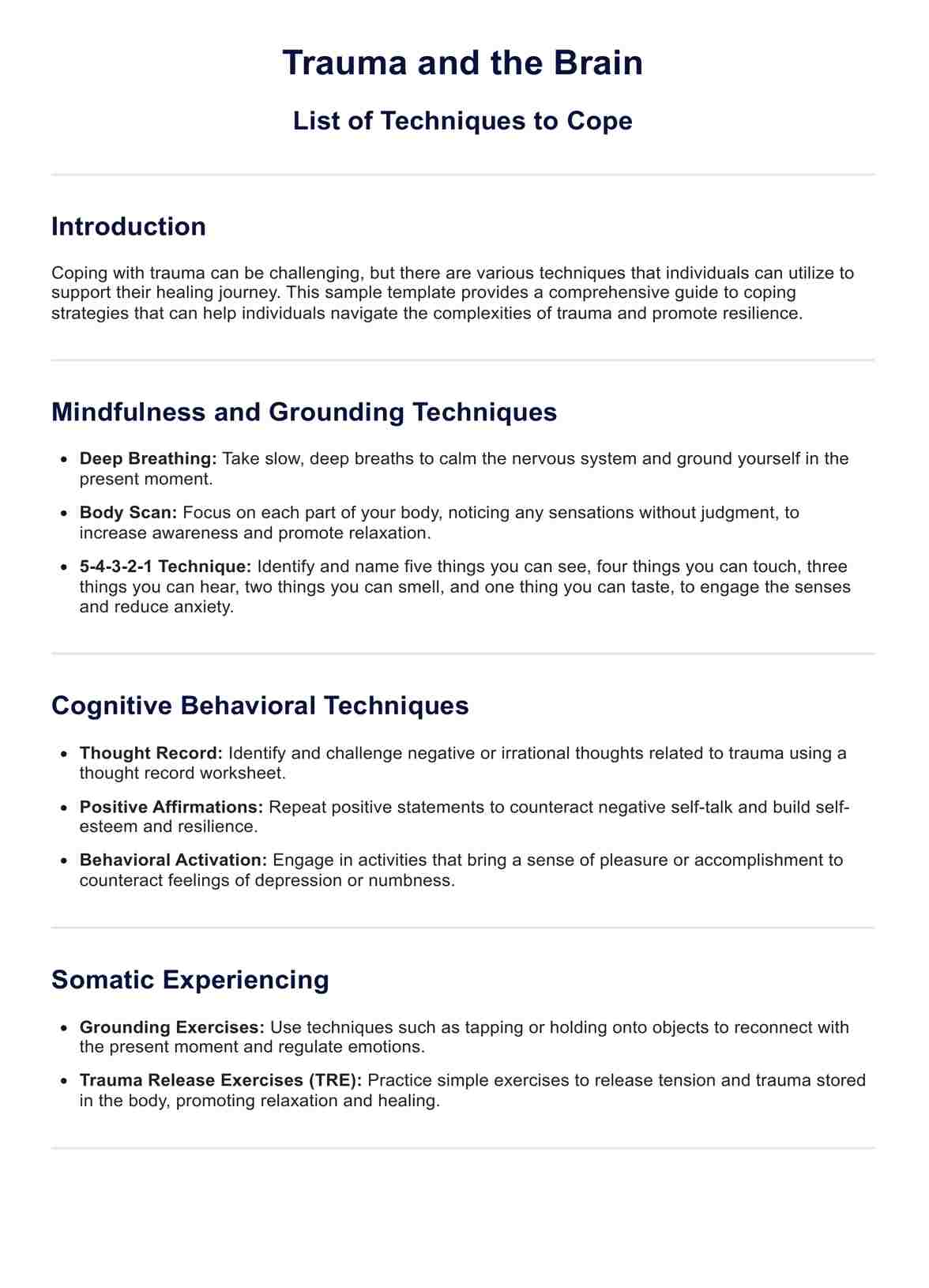
















-template.jpg)




















































































